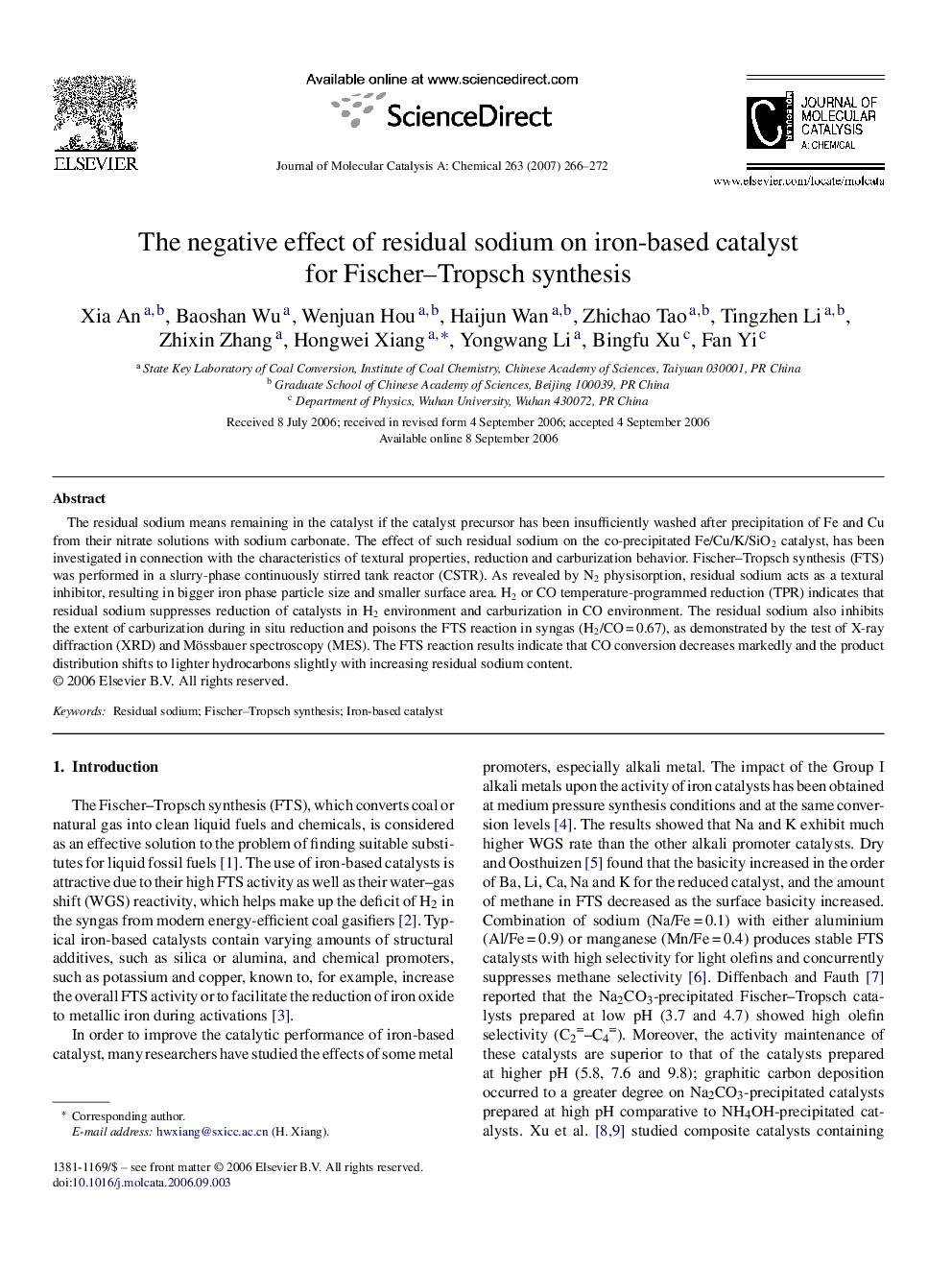| Article ID | Journal | Published Year | Pages | File Type |
|---|---|---|---|---|
| 68408 | Journal of Molecular Catalysis A: Chemical | 2007 | 7 Pages |
The residual sodium means remaining in the catalyst if the catalyst precursor has been insufficiently washed after precipitation of Fe and Cu from their nitrate solutions with sodium carbonate. The effect of such residual sodium on the co-precipitated Fe/Cu/K/SiO2 catalyst, has been investigated in connection with the characteristics of textural properties, reduction and carburization behavior. Fischer–Tropsch synthesis (FTS) was performed in a slurry-phase continuously stirred tank reactor (CSTR). As revealed by N2 physisorption, residual sodium acts as a textural inhibitor, resulting in bigger iron phase particle size and smaller surface area. H2 or CO temperature-programmed reduction (TPR) indicates that residual sodium suppresses reduction of catalysts in H2 environment and carburization in CO environment. The residual sodium also inhibits the extent of carburization during in situ reduction and poisons the FTS reaction in syngas (H2/CO = 0.67), as demonstrated by the test of X-ray diffraction (XRD) and Mössbauer spectroscopy (MES). The FTS reaction results indicate that CO conversion decreases markedly and the product distribution shifts to lighter hydrocarbons slightly with increasing residual sodium content.
Graphical abstractThe H2-TPR profiles indicated that residua of sodium affected the reduction of the catalysts significantly, which play an important role in the FTS performances of iron-based catalysts. Figure optionsDownload full-size imageDownload as PowerPoint slide
